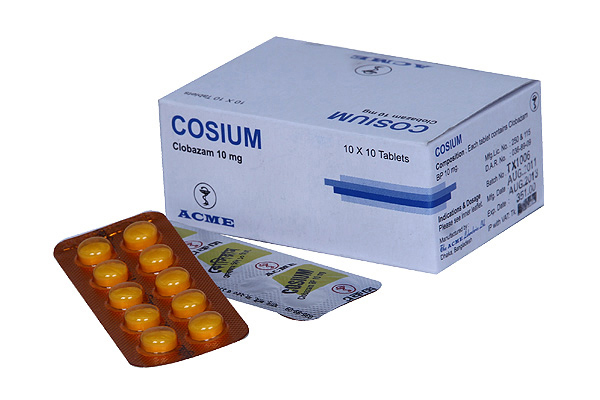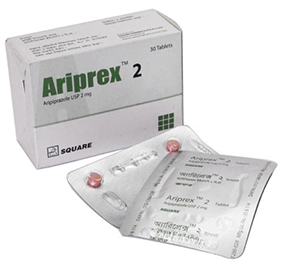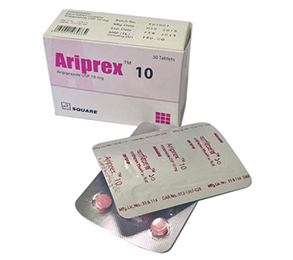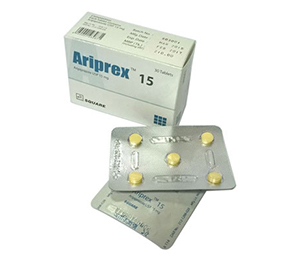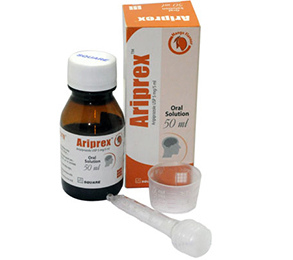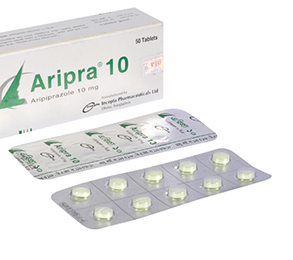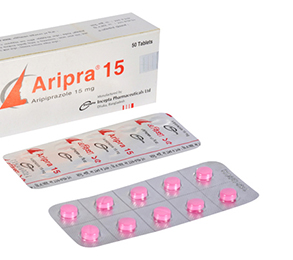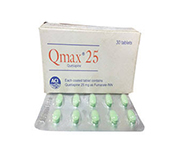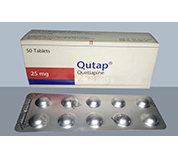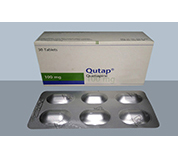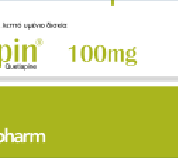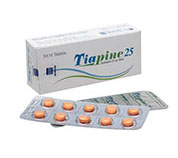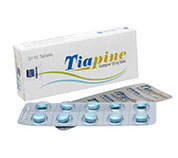Cosium 10 Pcs
Alternative products
Clobazam
Indications
Acute and chronic anxiety states which may produce the following symptoms in particular: anxiety, tension, restlessness, excitement, irritability, sleep disturbances from emotional causes, psychovegetative and psychosomatic disorders (for example, in the cardiovascular or gastrointestinal area), and emotional instability.
In patients with depression or anxiety associated with depression, Clobazam must be used only in conjunction with adequate concomitant treatment. Use of benzodiazepines alone, can precipitate suicide in such patients. Before treatment of anxiety states associated with emotional instability, it must first be determined whether the patient suffers from a depressive disorder requiring adjunctive or different treatment.
In patients with schizophrenic or other psychotic illnesses, use of benzodiazepines is recommended only for adjunctive, i.e. not for primary treatment.
As adjunctive therapy in patients with epilepsy who are not adequately stabilized with their anticonvulsant monotherapy.
Therapeutic Class
Benzodiazepine hypnotics
Pharmacology
Clobazam binds at distinct binding sites associated with the chloride ionopore at the post-synaptic GABA receptor. These GABA receptors are in various locations in the CNS (limbic, reticular formation) and clobazam increases the duration of time for which the chloride ionopore is open. As a result, hyper polarization and stabilization of the membrane occur as the post-synaptic inhibitory effect of GABA is enhanced.
Dosage
General Dosage: Dosage and duration of treatment must be adjusted to the indication, the severity of the condition and the individual clinical response. Due regard must be paid to the possibility of interference with alertness and reaction time. The fundamental principle is to keep the dose as low as possible.
Treatment of anxiety states-
Adults and adolescents over 15 years of age: The initial dose is usually 20 mg clobazam daily. If necessary, the daily dose may be increased. Generally, it is recommended that a total daily dose of 30 mg is not exceeded.
Elderly: Increased responsiveness and higher susceptibility to adverse effects may be present in elderly patients and require low initial doses and gradual dose increments under careful observation. A maintenance dose of 10 to 15 mg clobazam daily is frequently sufficient.
Children from 3 to 15 years of age: Increased responsiveness and higher susceptibility to adverse effects may be present in children and require low initial doses and gradual dose increments under careful observation. A daily dose of 5 to 10 mg clobazam is frequently sufficient. Benzodiazepines must not be given to children without careful assessment of the need for their use.
Secondary dosage adjustment: After the improvement of the symptoms, the dose may be reduced.
Timing of doses: If the dose is to be spread throughout the day, it is recommended that the larger portion be taken in the evening.
Duration of treatment: The duration of treatment must be as short as possible. The patient must be reassessed after a period not exceeding 4 weeks and regularly thereafter in order to evaluate the need for continued treatment, especially where the patient is free of symptoms. Generally, the overall duration of treatment (i.e. including tapering-of process) must not exceed 8 to 12 weeks. In certain cases, extension beyond the maximum treatment period may be necessary; treatment must not be extended without a re-evaluation of the patient's status using special expertise. It is strongly recommended that prolonged periods of uninterrupted treatment be avoided, since they may lead to dependence.
Discontinuation of treatment: It is strongly recommended that after prolonged treatment clobazam is not withdrawn suddenly but rather that the dose is reduced gradually under medical supervision; otherwise, withdrawal symptoms may occur.
Treatment of epilepsy in combination with one or more other anticonvulsants-
Adults and adolescents over 15 years of age: It is recommended that administration be started at small doses (5 to 15 mg daily), if necessary, increasing the dose gradually to a maximum daily dose of about 80 mg.
Children from 3 to 15 years of age: It is recommended that normally treatment be started at 5 mg daily. A maintenance dose of 0.3 to 1.0 mg/kg body weight daily is usually sufficient. Higher susceptibility to adverse effects may be present in children and require gradual dose increments under careful observation; Benzodiazepines must not be given to children without careful assessment of the need for their use.
Elderly: Higher susceptibility to adverse effects may be present in elderly patients and require low initial doses and gradual dose increments under careful observation.
Timing of doses: If the dose is spread throughout the day, it is recommended that the larger portion be taken in the evening. Doses of up to 30 mg clobazam can also be administered as a single evening dose.
Duration of treatment: The patient must be re-assessed after a period not exceeding 4 weeks and regularly thereafter in order to evaluate the need for continued treatment.
Discontinuation of treatment: At the end of treatment- to include cases in which response to therapy has been poor- it is strongly recommended that clobazam is not withdrawn suddenly but rather that the dose is reduced gradually; otherwise an increased susceptibility to seizures as well as other withdrawal symptoms may occur.
* চিকিৎসকের পরামর্শ মোতাবেক ঔষধ সেবন করুন'
Administration
The tablets can be administered whole, or crushed and mixed in applesauce. The 10 mg tablets can be divided into equal halves of 5 mg. Clobazam can be given with or without food.
* চিকিৎসকের পরামর্শ মোতাবেক ঔষধ সেবন করুন'
Interaction
Alcohol: Concomitant consumption of alcohol can increase the bioavailability of clobazam by 50% and therefore lead to increased clobazam effects.
Central nervous system depressant drugs: Especially when clobazam is administered in higher doses, a mutually potentiating effect is to be expected if other central nervous system depressant drugs (such as antipsychotics, anxiolytics, certain antidepressant agents, anticonvulsant drugs, sedative antihistamines, anaesthetics, hypnotics or narcotic analgesics, or other sedatives) are taken at the same time. Special caution is also necessary when clobazam is administered in cases of intoxication with such substances or with lithium.
Opioids: The concomitant use of benzodiazepines, including clobazam, and opioids increases the risk of sedation, respiratory depression, coma, and death because of the additive CNS depressant effect. Limit dosage and duration of concomitant use of benzodiazepines and opioids.
Anticonvulsants: If clobazam is administered simultaneously with anticonvulsants in the treatment of epilepsy, the dosage must be adjusted under regular medical supervision (EEG monitoring), as there may be interactions with the patient's basic anticonvulsant medication. In patients receiving concomitant treatment with valproic acid, there may be a slight to moderate rise in plasma valproic acid concentration. Phenytoin plasma levels may rise if patients receive concomitant treatment with clobazam. Where possible, it is recommended that blood levels of concomitantly administered valproic acid or phenytoin be monitored. Carbamazepine and phenytoin may cause an increase in the metabolic conversion of clobazam to the active metabolite N-desmethyl clobazam. Stiripentol increases plasma levels of clobazam and its active metabolite N-desmethylclobazam, through inhibition of CYP3A and CYP2C19. Monitoring of blood levels is recommended, prior to initiation of stiripentol, and then once new steady-state concentration has been reached, i.e. after 2 weeks approximately.
Narcotic analgesics: If clobazam is used concomitantly with narcotic analgesics, possible euphoria may be enhanced; this may lead to increased psychological dependence.
Muscle relaxants: The effects of muscle relaxants and nitrous oxide may be enhanced.
CYP 2C19 inhibitors: Strong and moderate inhibitors of CYP2C19 may result in increased exposure to N-desmethylclobazam (N-CLB), the active metabolite of clobazam. Dosage adjustment of clobazam may be necessary when co-administered with strong CYP2C19 inhibitors (e.g., cannabidiol containing medicinal products, fuconazole, fuvoxamine, ticlopidine) or moderate CYP2C19 inhibitors (e.g. omeprazole).
CYP 2D6 substrates: Clobazam is a weak CYP2D6 inhibitor. Dose adjustment of drugs metabolized by CYP2D6 (e.g. dextromethorphan, pimozide, paroxetine, nebivolol) may be necessary.
Contraindications
Clobazam must not be used-
- In patients with hypersensitivity to clobazam or any of the excipients of Clobazam.
- In patients with myasthenia gravis (risk of aggravation of muscle weakness).
- In patients with severe respiratory insufciency (risk of deterioration).
- In patients with sleep apnoea syndrome (risk of deterioration).
- In patients with severe impairment of liver function (risk of precipitating encephalopathy).
- In breast-feeding women Benzodiazepines must not be given to children without careful assessment of the need for their use.
- Clobazam must not be used in children between the ages of 6 months and 3 years, other than in exceptional cases for anticonvulsant treatment where there is a compelling indication.
Side Effects
Metabolism and nutrition disorders: Common: decreased appetite
Psychiatric disorders: Common: irritability, aggression, restlessness, depression (pre-existing depression may be unmasked), drug tolerance (especially during prolonged use), agitation.
Nervous system disorders: Very common: somnolence, especially at the beginning of treatment and when higher doses are used; Common: sedation, dizziness, disturbance in attention, slow speech/dysarthria/ speech disorder (particularly with high doses or in long-term treatment, and are reversible), headache, tremor, ataxia.
Eye Disorders: Uncommon: diplopia (particularly with high doses or in long-term treatment and is reversible)
Respiratory, thoracic and mediastinal disorders: Not known: respiratory depression respiratory failure (particularly in patients with pre-existing compromised respiratory function e.g. in patients with bronchial asthma or brain damage)
Gastrointestinal disorders: Common: dry mouth, nausea, constipation
Skin and subcutaneous disorders: Uncommon: rash; Not known: photosensitivity reaction urticaria; Steven Johnson syndrome, toxic epidermal necrolysis (including some cases with fatal outcome);
Musculoskeleteal and connective tissue disorders: Not known: muscle spasms, muscle weakness
General disorders and administration site conditions: Very common: fatigue, especially at the beginning of treatment and when higher doses are used. Not known: slow response to stimuli, hypothermia
Investigations: Uncommon: weight increased (particularly with high doses or in long-term treatment).
Pregnancy & Lactation
Pregnancy: Clobazam is not recommended during the first trimester of pregnancy and in women of childbearing potential not using contraception. Clobazam should be used during pregnancy only if the potential benefit justifies the potential risk to the fetus. Animal studies have demonstrated reproductive toxicity. Clobazam crosses the placenta. In the post-marketing safety database, limited data on exposed pregnancies are available with clobazam. A large amount of data collected from cohort studies has not demonstrated evidence of the occurrence of malformations following exposure to benzodiazepines during the first trimester of pregnancy. However, in certain epidemiological case-control studies, an increased incidence of cleft lip and palate was observed with benzodiazepines. Cases of reduced fetal movement and fetal heart rate variability have been described after administration of benzodiazepines during the second and/or third trimester of pregnancy. Administration of clobazam during the late phase of pregnancy or during childbirth can result in the occurrence of neonatal respiratory depression (including respiratory distress and apnea), which may be associated with other disorders such as sedation signs, hypothermia, hypotonia, and feeding difficulties (which may result in poor weight gain) in the newborn (signs and symptoms of the so-called "floppy infant syndrome"). Moreover, infants born to mothers who have taken benzodiazepines over longer periods during the later stages of pregnancy may have developed physical dependence and may be at risk of developing a withdrawal syndrome in the postnatal period. Appropriate monitoring of the newborn in the postnatal period is recommended. Women of childbearing potential should be informed of the risks and benefits of the use of Clobazam during pregnancy. If a woman plans a pregnancy or becomes pregnant, carefully evaluate the risks and benefits and whether treatment with Clobazam should be discontinued. If Clobazam treatment is to be continued, use Clobazam at the lowest effective dose.
Lactation: Clobazam must not be used in breastfeeding women, since clobazam passes into breast milk.
Precautions & Warnings
Serious Skin Reactions: Serious skin reactions, including Stevens-Johnson syndrome (SJS) and toxic epidermal necrolysis (TEN), have been reported with clobazam in both children and adults during the post-marketing experience. A majority of the reported cases involved the concomitant use of other drugs, including antiepileptic drugs that are associated with serious skin reactions. SJS/TEN could be associated with a fatal outcome. Patients should be closely monitored for signs or symptoms of SJS/TEN, especially during the first 8 weeks of treatment. Clobazam should be immediately discontinued when SJS/TEN is suspected. If signs or symptoms suggest SJS/TEN, use of this drug should not be resumed and alternative therapy should be considered.
Respiratory depression: Clobazam can cause respiratory depression, especially if administered in high doses. Therefore in patients with chronic or acute respiratory insufficiency, respiratory function must be monitored and a dose reduction may be necessary. Clobazam is contraindicated in patients with severe respiratory insufficiency.
Muscle weakness: Clobazam can cause muscle weakness. Clobazam is contraindicated in patients with myasthenia gravis.
Renal and hepatic impairment: In patients with impairment of renal or hepatic function, responsiveness to clobazam and susceptibility to adverse effects are increased, and a dose reduction may be necessary. In long-term treatment, renal and hepatic function must be checked regularly.
Elderly patients: In the elderly, due to the increased sensitivity to adverse reactions such as drowsiness, dizziness, muscle weakness, there is an increased risk of fall that may result in serious injury. A dose reduction is recommended.
Tolerance in epilepsy: In the treatment of epilepsy with benzodiazepines- including Clobazam, consideration must be given to the possibility of a decrease in anticonvulsant efficacy (development of tolerance) in the course of treatment.
CYP2C19 poor metabolizers: In patients who are CYP2C19 poor metabolizers, levels of the active metabolite N-desmethylclobazam are expected to be increased as compared to extensive metabolizers. Dosage adjustment of clobazam may be necessary (e.g. low starting dose with careful dose titration).
Suicidality: Several epidemiological studies show an increased incidence of suicide and suicide attempt in patients with or without depression, treated with other benzodiazepines and hypnotics. There are very limited data available for clobazam in these studies. Cases of suicidal behavior have been reported with clobazam in post-marketing surveillance. All of these cases had confounding factors.
Concomitant use of CYP2C19 inhibitors: The concomitant use of clobazam with CYP2C19 inhibitors, including cannabidiol containing medicinal products, dietary supplements and recreational products may result in increased exposure to N-desmethylclobazam (NCLB). Such increases might lead to increased adverse effects, such as somnolence and sedation. When used with medicinal products that are CYP2C19 inhibitors dosage adjustment of clobazam may be necessary. Dietary supplements and recreational products containing cannabidiol must not be taken in combination with clobazam as they contain unknown quantities of cannabidiol and are of variable quality
Storage Conditions
Do not use the medicine later than the date of expiry. Store below 30° and protect from light. Keep out of the reach of children.
- Type Tablet
- Tag
- Morbi leo risus
- Porta ac consectetur ac
- Vestibulum at eros
